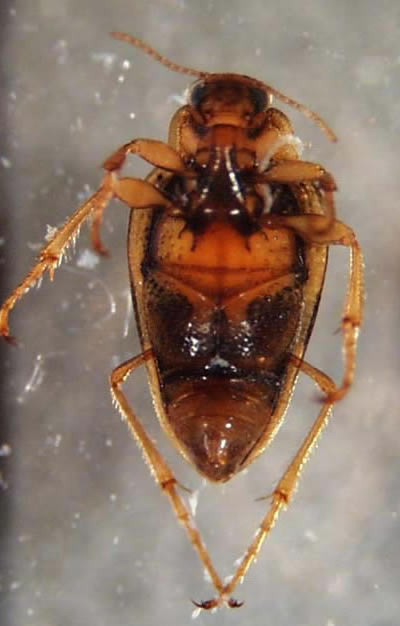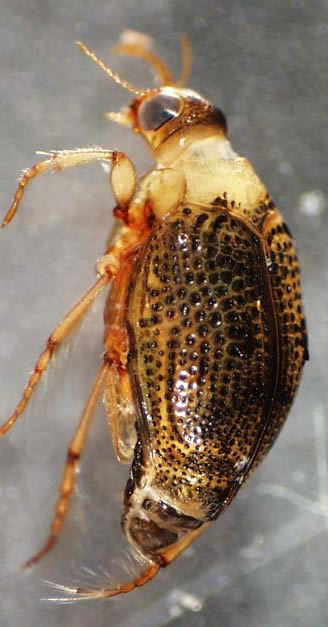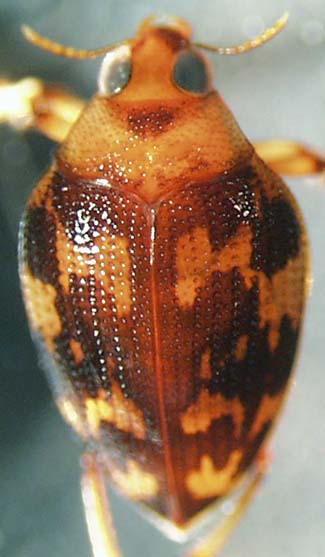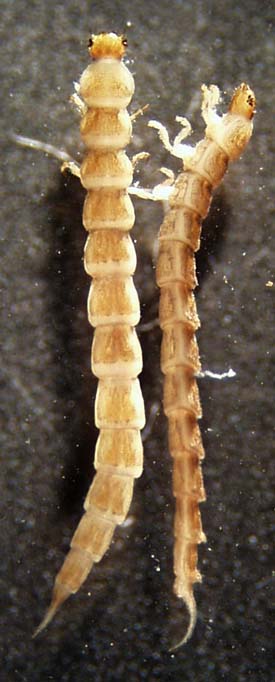
THE XERCES SOCIETY FOR INVERTEBRATE CONSERVATION Aquatic Invertebrates in Pacific Northwest Freshwater Wetlands |
| Identify taxa |
Haliplidae (crawling water beetles) |
Haliplidae tend to inhabit slow or still waters characteristic of wetlands. Both larvae and adults spend most of their time feeding on plant material in densely vegetated areas of the water. Adults may be mistaken for predaceous diving beetles (Dytiscidae) when viewed dorsally, but only halipid adults have the characteristic enlarged plates that cover the bases of their hindlegs and the first three segments on the underside of the abdomen. These plates can trap and retain air to aid in buoyancy. The elytra are often spotted and have rows of tiny uindentations; legs are fringed with swimming hairs. In a sample tray, Halipidae can be seen zipping around the edges and scrambling through the material in the bottom.
|
Size:
small Identifying feature(s): two large plates that completely cover the first three segments on the underside of the abdomen Habitat: both flowing and still waters; wetlands Tolerance to pollutants: tolerant |
| The larvae are less animated and more difficult to find than adults. Many have an elongated body with numerous long thin projections extending from the dorsal surface of the abdomen, which makes them resemble small porcupines. |
 |
|
© 2007 Xerces Society
Contact info@xerces.org



